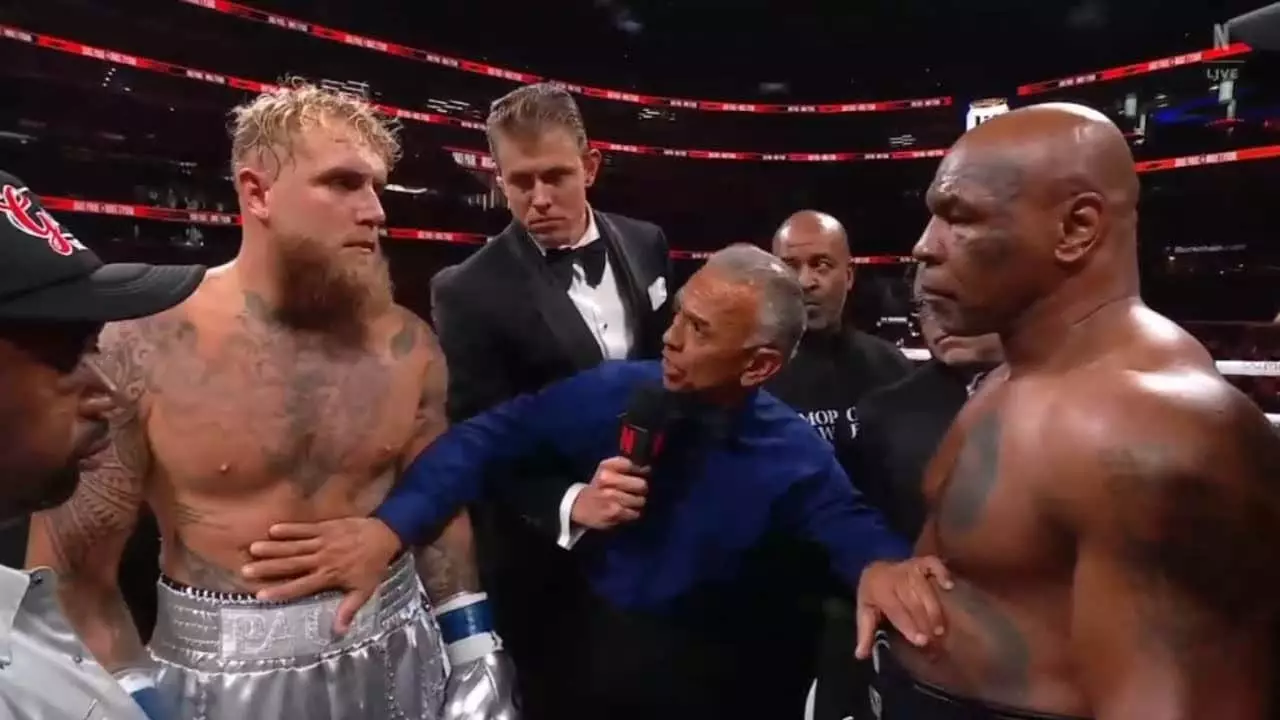Boxing has a storied tradition of star power, with legendary figures like Muhammad Ali, Mike Tyson, Floyd Mayweather, and Canelo Alvarez capturing the public’s imagination and evolving into cultural icons. This allure has historically drawn fans into arenas and generated significant revenue. However, in the current landscape of sports and entertainment, boxing is struggling to maintain its prominence amidst fierce competition. As the activity of its stars dwindles and their public presence becomes sporadic, the sport risks fading into obscurity. High-profile events such as the Tyson Fury vs. Francis Ngannou exhibition or Jake Paul’s celebrity matches serve to remind us of what boxing can achieve when recognized figures participate. Yet, while these events create brief spikes in interest, they cannot sustain boxing’s long-term relevance.
In today’s fast-paced media environment, boxing faces an uphill battle against not just other combat sports like MMA but also an endless array of entertainment options. Major leagues like the NFL and NBA draw massive audiences, and platforms such as Netflix and TikTok vie for viewer attention. During this content overload, boxing stars’ infrequent appearances render them forgettable. The Ultimate Fighting Championship (UFC) has navigated these challenges adeptly by orchestrating regular events and consistently promoting its fighters through storytelling—methods that boxing desperately needs to adopt. MMA stars such as Conor McGregor and Israel Adesanya are often in the public eye, keeping fans engaged even during gaps between events. In contrast, boxing’s elite fighters often struggle to maintain this engagement.
When boxing’s top athletes do step into the ring, they often create moments that thrill fans and garner significant attention. Gervonta Davis’ bout against Ryan Garcia and Terence Crawford’s strategic dismantling of Errol Spence are prime examples of events that have captivated audiences and delivered the excitement that boxing can generate. However, these exhilarating encounters are too infrequent. The boxing landscape has transformed some of its biggest names into seasonal attractions rather than consistent participants. Even Canelo Alvarez, who remains relatively active compared to his peers, grapples with the challenge of finding suitable opponents who can ignite interest among both hardcore enthusiasts and casual viewers alike.
Jake Paul may not enjoy the same level of respect as other boxers, but his impact on the sport cannot be overlooked. Fueled by a strategic blend of self-promotion and engagement, Paul’s approach highlights the vital need for activity and connectivity. Even though his opponents may lack traditional credentials, the buzz around each of his fights draws in a younger audience and keeps the spotlight on boxing. In contrast, other prominent fighters often miss opportunities to capitalize on their platforms, appearing disconnected from the very media ecosystem they inhabit. For example, Crawford and Davis must rethink their engagement strategy by harnessing social media and other modern communication channels to build excitement year-round.
For boxing to reclaim its foothold in the realm of sports, its stars must fight more frequently against a diverse array of competitive opponents. Importantly, this means opting for meaningful matchups over mere tune-ups, regardless of the potential financial risks. The tendency to postpone high-stakes fights until they reach their peak profitability only alienates fans, as evidenced by the years of waiting surrounding Crawford’s fight against Spence. Boxing must expedite significant bouts like Davis versus Shakur Stevenson to not only keep audiences engaged but to also nurture the competitive landscape.
More consistent exposure benefits all fighters—undercard talent will have a chance to shine while keeping the overall audience invested in the sport. Boxing thrives when its stars radiate frequent activity, creating a vibrant narrative around the sport as a whole.
Boxing brims with potential, boasting world-class athletes and deeply woven narratives that resonate with audiences. The key to preserving the sport’s relevance lies in its superstars adopting more consistent fight schedules. Fighters like Gervonta Davis, Terence Crawford, and Canelo Alvarez must transcend the role of merely being excellent boxers; they need to become compelling entertainers who can connect with fans. In an age characterized by boundless entertainment choices, boxing’s elite need to consider their responsibility not just to compete for titles but also to fight for the sport’s survival and growth. By increasing their activity levels, embracing innovative matchmaking strategies, and engaging in smarter promotion, boxing can surge forward boldly, reclaiming its place in the expansive world of sports entertainment.

